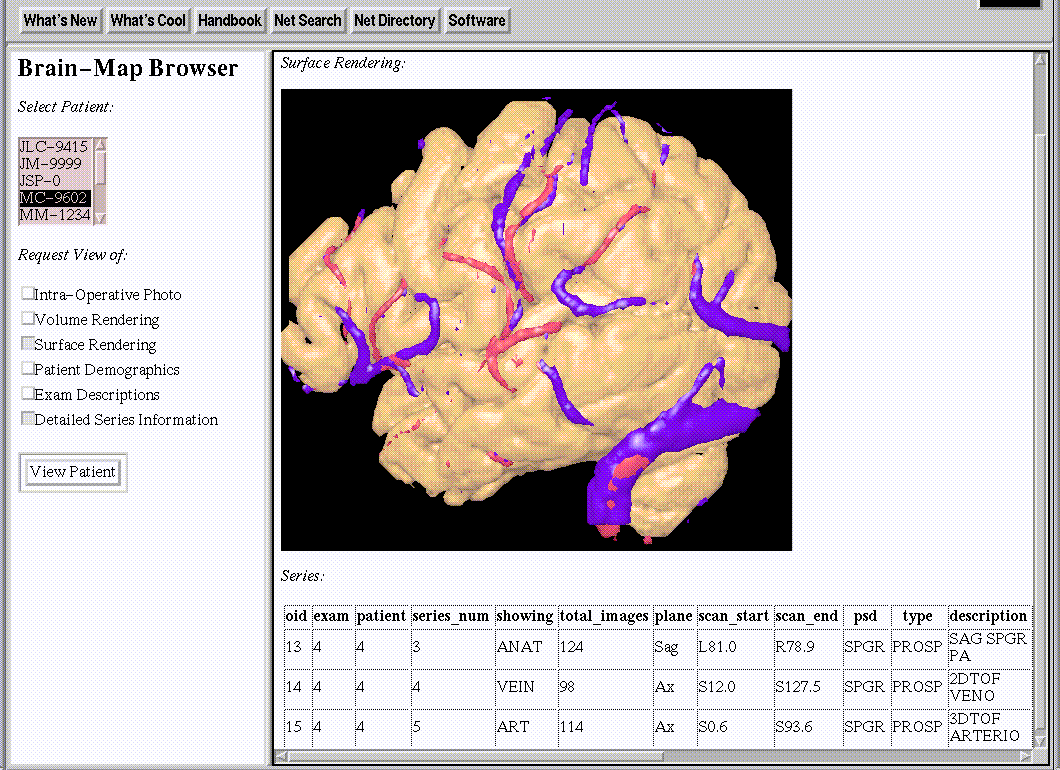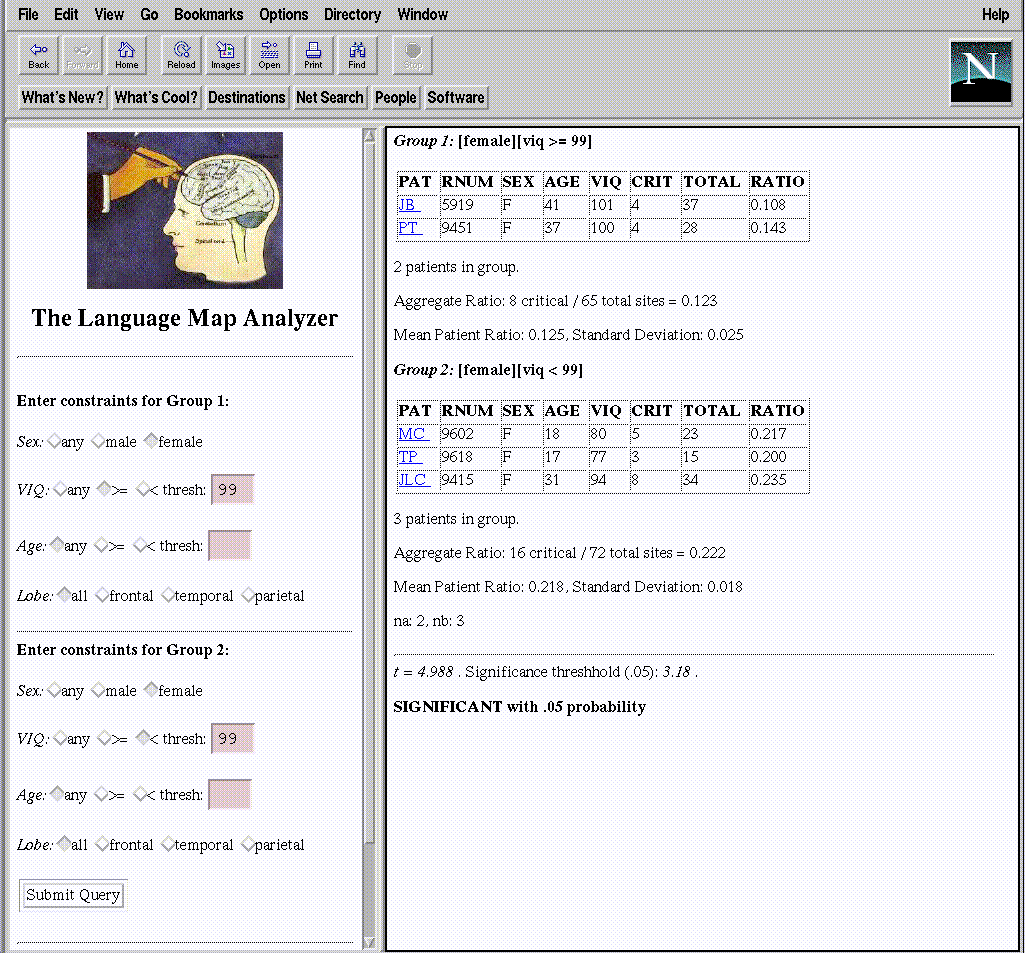
Brain Map Retrieval
The brain map authoring tools are designed to be used by only one or two people. The retrieval tool, like the anatomy atlas client, is designed so that anyone with proper authorization can access the language maps, and can relate them to other brain map databases available on the net.
The brain map retrieval tool is an HTML form generated by a Web based repository manager [Jakobovits1996, Jakobovits1997]. Repository systems are becoming a popular approach to managing multimedia data, in which data files are saved in a protected area that is indexed by meta-data about the files. Using our terminology, the protected data are stored in the spatial database, whereas the metadata are stored in the symbolic database.
For this application the symbolic database is implemented in a free (for non-commercial use) relational database called msql, and is accessed by an msql relational database server. The relational server, as well as the files in the spatial database, are accessed and controlled by a set of perl CGI routines which together implement the repository manager. The repository manager is in turn accessed and controlled by the user via forms-based HTML documents that are sent to the Web client.
The repository manager is currently only partially implemented, but all the components exist in one form or another. User interface Web forms have been developed that allow an author to enter a new patient, to transfer images and maps to the repository, to browse the repository to retrieve relevant information, and to analyze the data.
Twelve patients are currently in the database (those used for our current evaluation), and are visible to local users with a password. We are currently developing a policy for determining which data we make available to the wider Web community. Once that has been determined we will open a demo version of the repository to the general public.
Here are a few screen captures of the kind of information that is available on the repository:

An individual patient record, showing a reconstruction, and metadata about the images used to generate the reconstruction:

A "data mining: tool that allows individual patients to be grouped in two categories based on criteria such as age, sex or verbal IQ. The repository manager retrieves those patients matching the criteria and calculates the significance of the difference between a given dependent variable for the two populations, in this case percent language sites. This finding was presented at the recent Society for Neuroscience meeting [Modayur 1997a].